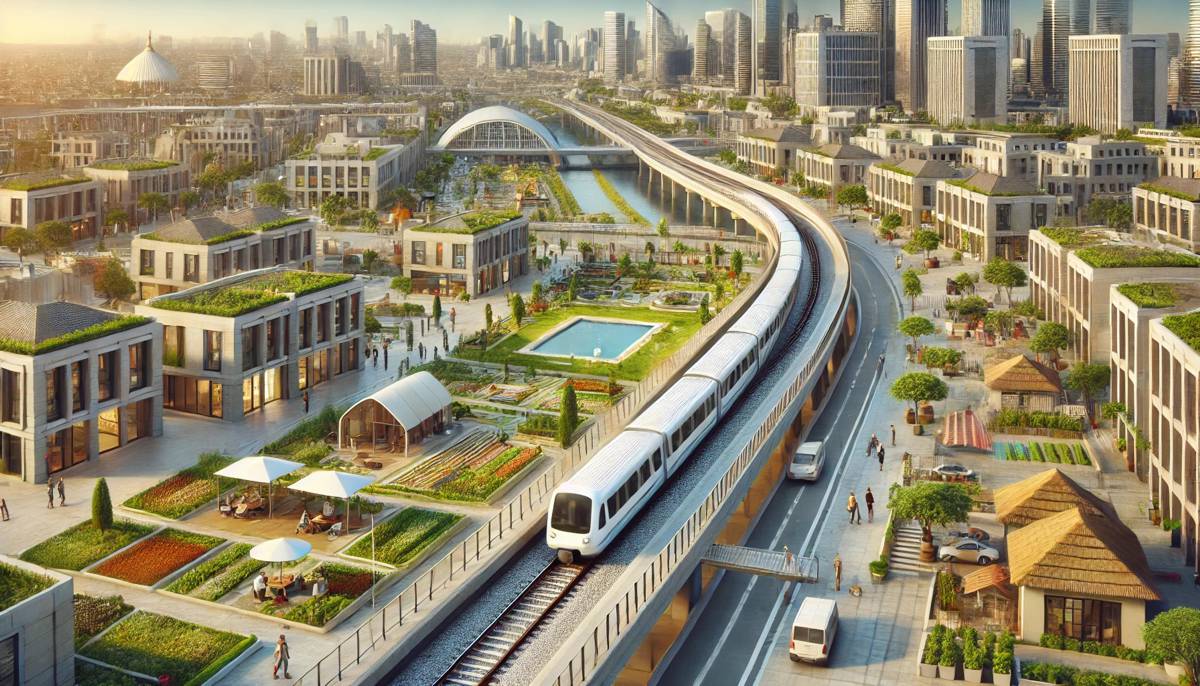The Promise of Urban Rail Transforming African Cities
Urbanisation in Africa is booming, with 11 of the world’s most populous cities located on the continent. This rapid urban growth is a double-edged sword: while it fuels economic expansion, it also brings challenges, particularly in transport.
The surge in motorized transport has led to chronic traffic congestion, longer commutes, and an increase in traffic-related fatalities and injuries. For residents, the daily grind of navigating these congested streets is a testament to the urgent need for effective urban mobility solutions.
The Rail Solution: Efficiency and Sustainability
Rail-based transport systems, such as suburban commuter trains and light rail, offer a sustainable and efficient solution to urban transport woes. Globally, cities that have successfully integrated rail systems into their transport infrastructure report improved mobility, reduced air pollution, and support for compact, liveable urban environments.
In Africa, many cities already possess underutilized railway lines, primarily serving freight. Repurposing these lines for passenger transport presents a golden opportunity. Such a shift could transform these underused assets into vibrant development corridors, particularly when aligned with transit-oriented development (TOD) strategies. TOD focuses on creating high-density commercial and residential spaces around transit stations, promoting a car-free lifestyle.
Leveraging Existing Railway Assets
African cities like Lagos, Maputo, and Nairobi showcase the untapped potential of existing railway rights-of-way. However, realising this potential requires significant investment in upgrading tracks, train control systems, and rolling stock to provide competitive and attractive passenger services.
For rail to effectively serve as the backbone of urban transit, seamless integration with other transport modes is crucial. This means investing in feeder infrastructure like sidewalks and bikeways, ensuring passengers can easily access rail stations. Furthermore, active coordination with local and regional authorities is essential to achieve a well-synchronized transport network. A significant challenge lies in collaborating with bus and minibus operators, who often view rail as a competitor.
Developing new models of cooperation can mitigate this friction and enhance overall service efficiency.
Transit-Oriented Development: From Concept to Reality
While TOD offers significant benefits, moving from concept to implementation can be fraught with challenges. Success hinges on strategies that reflect the unique contexts and challenges of African cities.
Building consensus among the myriad stakeholders involved is critical to smooth implementation. This requires robust engagement and transparent dialogue to align the diverse interests at play.
Financing the Future of Urban Rail
Sustainable urban rail systems need robust financial backing. Offering affordable rail services to lower-income residents marks a departure from the prevalent urban transport model in many African countries, where private operators run bus and minibus services, recuperating costs through fares.
A comprehensive financial analysis is necessary, exploring revenue sources such as ticket sales, commercial revenues, government subsidies, and Land Value Capture (LVC).
LVC is particularly promising as it monetizes the increased land value resulting from improved accessibility. This funding can repay development investments or support ongoing services. There are two main types of LVC:
- Tax-based LVC: Utilizes local government land or property taxes to capture the increase in land value.
- Development-based LVC: Leverages the increased property value of station areas through land sales, leasing, joint developments, or the sale of air rights.
Implementing LVC requires aligning stakeholder interests and structuring deals that benefit all parties involved. Financial benefits may take time to materialize, but focusing on public housing near rail lines can provide immediate community benefits, especially in low-income areas.
Public-Private Partnerships: A Pathway to Success
Public-Private Partnerships (PPPs) offer a viable pathway for delivering suburban rail services and enabling LVC. Many African cities already have the necessary legal frameworks in place for PPPs.
However, effective implementation demands that governments develop the skills to structure and oversee these partnerships and address any funding challenges.
Cities Poised for Transformation
With the right policies and resources, railways can anchor sustainable urban development across Africa. Several major cities, including Accra-Tema, Conakry, Dar es Salaam, Kampala, Kinshasa, Lagos, Luanda, Maputo, and Nairobi, are particularly well-positioned for this transformation.
The availability of existing rail infrastructure provides a solid foundation for developing comprehensive urban rail systems that can alleviate congestion, reduce emissions, and support economic growth.
The Road Ahead is Policy and Investment
For rail to play a transformative role, African governments must commit to supportive policies and substantial investments.
This involves not only upgrading physical infrastructure but also fostering an integrated approach to urban planning that promotes TOD and LVC. Collaboration between public and private sectors, alongside active community engagement, will be key to unlocking the full potential of urban rail.




















